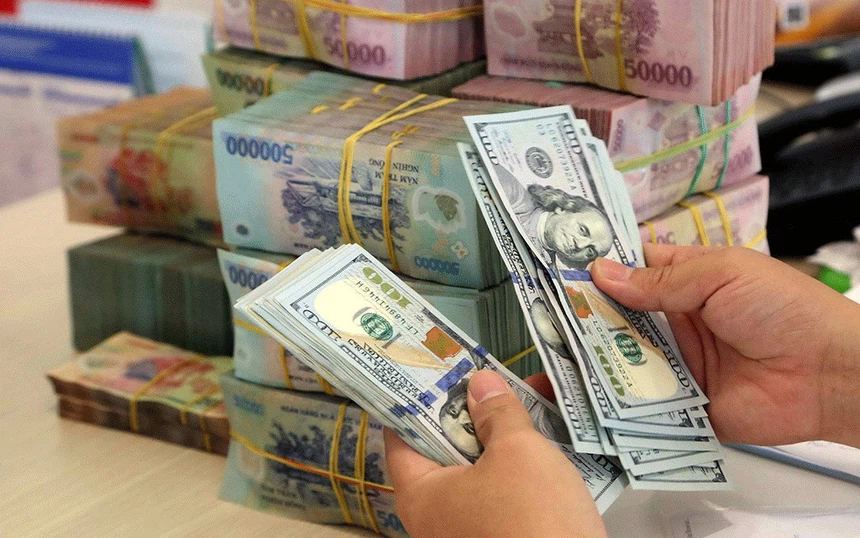Double whammy for non-dollar currencies
The US dollar has the upper hand at the moment with other currencies hit by what can be called a double whammy.

The rising risk aversion has lifted the US dollar.
The first hit comes from the fact that rising risk aversion has lifted the dollar. But, while such movement often generates a fall in treasury yields as nervous investors buy “safe” bonds, treasury yields have risen and this provides the second part of the double whammy that’s hitting other currencies. For now, these factors may keep the dollar elevated, but they are unlikely to last.
It is well known that the dollar tends to rise with increased risk aversion. A common measure for risk aversion is the US VIX index of stocks market volatility and this has risen quite sharply over the past few weeks as stocks have slumped. The dollar has risen in tandem, particularly against Asian currencies such as the yen and the renminbi.
Usually when risk aversion rises sharply and the dollar appreciates a sort of automatic adjustment mechanism kicks in as the rise in risk aversion lifts the demand for treasuries and so lowers their yield. This is clearly most pronounced when the rise in risk aversion is the result of an adverse shock, such as the pandemic, for then the fall in treasury yields is compounded by policy easing from the Fed. Now this drop in treasury yields that we usually see during periods of rising risk aversion does not stop dollar strength immediately.
But we would expect that the relative fall in US yields will slowly start to weigh on the dollar, particularly as risk aversion fades and this, of course, is what we usually see. But the difference now is that this rise in risk aversion is not reflected in weakness in equity prices but also weakness in bond prices, including treasuries. As a result, there’s none of the usual offsetting impact from lower yields and that could conceivably give the dollar much more scope to rise – if it continues.
What we would question here is the “if it continues” part because we are sceptical that both risk aversion increases and treasury yields rise materially. One way to think about this is to ask why yields are rising given increased risk aversion. For a start, it is not because the US inflation outlook has deteriorated. In fact, most of the data recently on inflation has been quite good and inflation expectations have not increased.
Instead, the problem has been that the economy is still reasonably robust in spite of 525-bps of Fed hikes and a scaling down of the Fed’s assets. If the economy can really live with a 5%-plus fed funds rate without slowing materially, it raises questions about the neutral policy rate, which the Fed currently pegs at 2.5% according to the median forecast of FOMC members.
And if the neutral rate is really materially higher than this, it seems reasonable to assume that longer-term treasury yields should be significantly higher than we’ve seen in the pre-pandemic period. But while there may well be arguments why the neutral rate is higher – and we listed some of these last week when talking about the “natural” level of inflation – it is still the Standard Bank’s view that when the Fed starts to move towards the easing cycle, traders and investors will get carried away and expect policy rates to move significantly lower. This merely reflects the mindset of the bond market that we’ve seen for many years now whereby most seem to have expected the Fed to follow a more dovish path than it has.
Remember back to the last rate-hike cycle between 2005 and 2018, when there was significant market pressure for the Fed to start cutting (helped along by criticism from former president Trump, of course) and eventually the Fed yielded. Now we are not saying that the market is always correct in holding a generally more dovish view than the Fed.
In fact, more often than not it has seemingly been wrong. But we don’t think opinions are going to change and the looming easing cycle should see both risk aversion fall and treasury yields come down – and that will turn into a double whammy for the dollar, not the double whammy for non-dollar currencies that it is right now.








